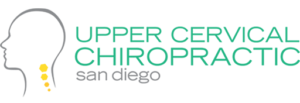 Head injuries have been a cause of concern for both children and adults alike. Some injuries can result in unwanted headaches that may linger for longer than it’s comfortable. However, some cases may lead to serious health concerns requiring medical attention. Upper cervical care in San Diego can help manage and keep uncomfortable symptoms at bay following mild head injuries.
Head injuries have been a cause of concern for both children and adults alike. Some injuries can result in unwanted headaches that may linger for longer than it’s comfortable. However, some cases may lead to serious health concerns requiring medical attention. Upper cervical care in San Diego can help manage and keep uncomfortable symptoms at bay following mild head injuries.
According to the CDC, about 1.5 million people in the United States experience a traumatic brain injury, with about 75% classified as mild closed head injuries. About 90% of those who show symptoms of mild head injuries experience post-traumatic headaches as well. They usually start within a week following the day of the injury, and they tend to experience different types of headaches. To mend the headaches, some require upper cervical care in San Diego.
Concussions or mild head injuries can happen because of several incidents, including the following:
- Falls or slips
- Vehicular or motorcycle accidents
- Workplace injuries or accidents
- Injuries endured during military service
- Sporting injuries or accidents
- Physical assaults
Given that injuries endured are mild, some do not escape the headaches that manifest after the accidents. Some of the usual types of headaches include:
Table of Contents
#1. Tension headaches
This headache usually describes tightness and squeezing felt primarily on the forehead. Patients who complain of a tension headache describe it as wearing a snuggly fit hat around the head. Stress and muscle spasms are common concerns in people who experience tension headaches.
#2. Migraines
Far from a typical headache, migraines also go beyond a severe headache. They are usually accompanied by debilitating symptoms such as nausea, vomiting, visual disturbances, and increased sensitivity to lights and sounds. There are also types of migraine, and their symptoms may vary from person to person.
People living with migraine usually feel relief from symptoms through upper cervical care in San Diego. It’s a natural and non-invasive approach with a promise of lasting relief and reduced chances of recurrence for the two most commonly observed types of migraines, namely:
- Migraine without aura – These are migraine episodes with no warning symptoms (tunnel vision, blurry vision, sensory sensitivity, etc.).
- Migraine with an aura – These usually show warning signs through visual disturbances an hour or more before a full-blown migraine episode.

#3. Rebound headaches
Many people opt for pain relievers to help manage their symptoms. However, abuse of its use can lead to rebound headaches. Some patients who overuse their pain reliever medication can end up with severe headaches. This can also happen if a dose has been missed or lower dosage is taken. In addition, a sudden decrease in caffeine consumption can also trigger rebound headaches.
#4. Occipital neuralgia
If you have been noticing bouts of sharp and severe pain at the back of your head, that can be a case of occipital neuralgia. You may notice throbbing, piercing, or even an electric-shock-like recurring pain that you can feel at the back of your head, behind the ears, or upper neck, and it’s usually on one side of the head. Headaches linked to occipital neuralgia often stem from the occipital nerve’s irritation.
#5. Cervicogenic headaches
Chiropractic doctors who practice upper cervical care in San Diego also deal with patients who experience cervicogenic headaches. This can happen because of a physical or neurologic condition. For example, trauma, fracture, whiplash injury, or dislocation can all lead to cervicogenic headaches. But underlying medical conditions such as rheumatoid arthritis (RA), cancer, or an infection can also set off episodes of this headache type.
Patients may experience pain in the neck up to the head, which feels like a steady ache or a dull feeling that can eventually worsen. Cervicogenic headaches usually happen on one side of the neck, face, or head. Neck injuries can trigger this due to irritation caused to the nerves around the neck. Pain can also get worse due to movement or head position.

Injured girl after car accident in the street
Upper Cervical Spine Misalignment Following an Injury
If an accident or injury hurt you in the head or neck, you will first need to rule out that there is no bleeding in the brain and if you are experiencing a concussion. If you are experiencing a mild injury, you will still need to pay attention to any symptoms that may arise for days, weeks, or even months after the incident.
Knowing your symptoms can help you effectively manage them for guaranteed comfort and long-term relief from your pain. It may also be helpful to assess your head and neck to gauge the damage level. You may also benefit from a consultation with an upper cervical chiropractor to examine your axis and atlas bones for a misalignment following an injury. If not adequately addressed, this can trigger unwanted health concerns in the long run. This may include bouts of headaches and migraine episodes. A certified chiropractic doctor can realign a misalignment in your bones to help your body naturally heal. Your atlas and axis are the two bones on the uppermost section of your spine found in the neck area.
Your atlas bone helps keep your head in place to ensure flawless movements in different directions. So it’s crucial to maintain them properly, especially after an unwanted accident or injury. Injuries are one of the leading costs of your atlas slipping from its original position. This will then be followed by pain and pressure on the neck, brainstem, and head. Therefore, you may want to book an appointment for upper cervical care in San Diego to ensure a smoother and faster recovery.
Dr. Cook, a trusted chiropractor for Upper Cervical Care in San Diego
Dr. Mercedes Cook of Upper Cervical Chiropractic San Diego has been a go-to chiropractic doctor for patients dealing with different headaches following an injury. By applying safe and gentle corrections in the upper cervical bones to correct misalignments in your upper neck, she helps bring back the natural blood flow and natural healing capability of your body to reduce headaches and migraine episodes.
To get started with your personalized care routine, book an appointment with Dr. Cook by booking online or calling (858) 434-5926. Get rid of your persistent headaches. Try upper cervical care in San Diego today!
To schedule a consultation with Upper Cervical Chiropractic San Diego, call 858-434-5926 or just click the button below.
If you are outside of the local area you can find an Upper Cervical Doctor near you at www.uppercervicalawareness.com.







